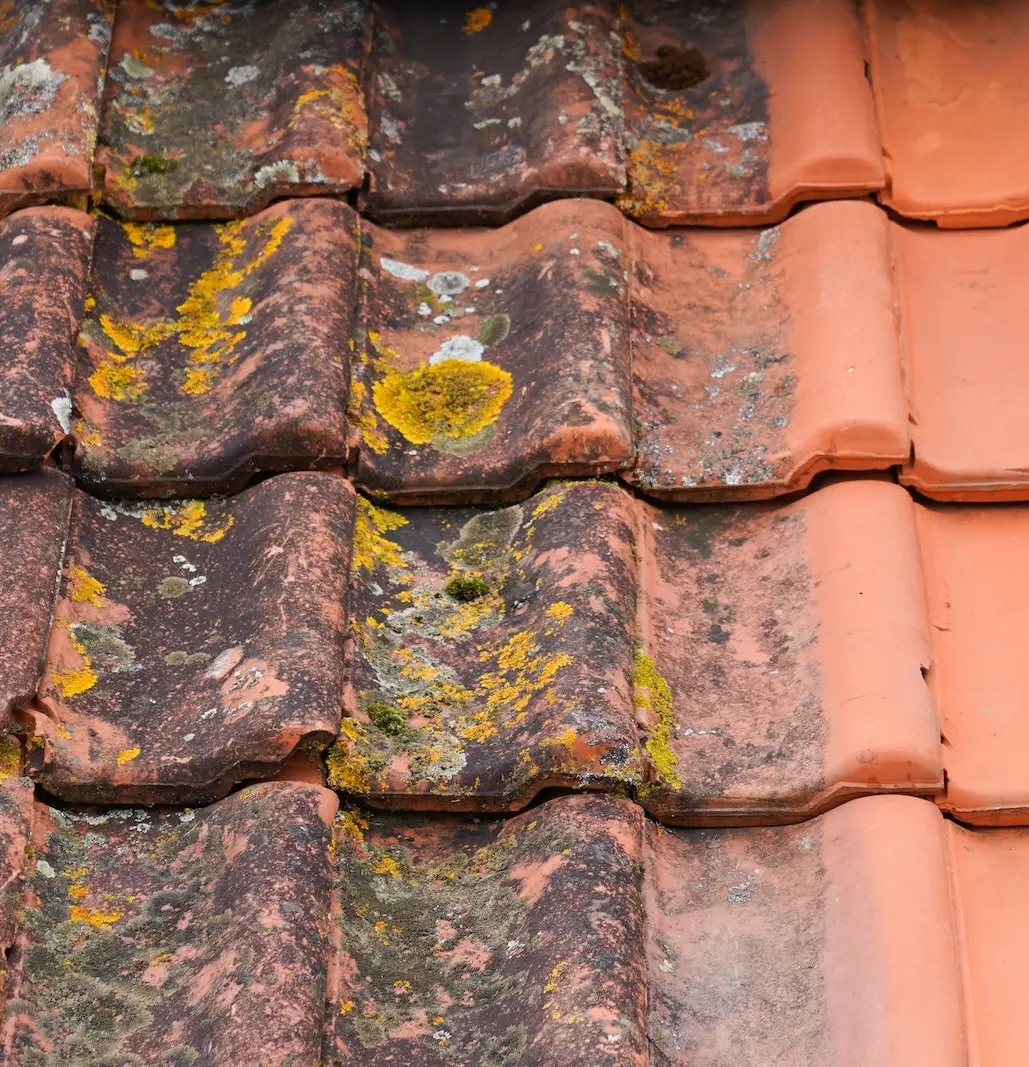There are two types of algae that typically grow on your roof, “black algae” and “moss” which is greenish colored in nature. Algae and moss do have some similarities but are also very different and require different procedures to remove or prevent.
Related: How To Clean Your Roof
Understanding Black Algae on Your Roof
Black algae is often mistaken as mold or mildew because of the black discoloration and streaks it leaves throughout the roof.
Coastal and humid climates foster a better environment for algae to grow. Algae discoloration typically begins as small spots on your roof then quickly transform into a streak on the roof. Algae spores are carried by the wind or animals and can quickly spread from one rooftop to another. But don’t panic, there is no scientific evidence that algae is damaging to your asphalt shingles. However, aesthetically it is very unappealing.

Roof Moss: Causes, Spread, and Shingle Damage
Moss usually grows on the north side of your home because it receives less sunlight and stays damp longer than south facing roof planes.
Moss is greenish in color and flourishes in moist and damp environments. Another culprit for moss is overhanging tree branches that provide additional shade and drop debris on the roof. Debris that falls on the roof can hold moisture and act as a food source for moss. Moss can also be carried by the wind or animals and easily spread throughout the neighborhood. Unfortunately moss can be detrimental to asphalt shingle performance. Moss can cause the leading edges of shingles to lift or curl. Lifting or curling shingles can increase the risk of shingle blow-offs during high winds.

Protecting Your Roof From Moss and Algae Growth
Don’t worry, algae and moss can be removed from your roof with the right approach. A word of advice; never use a pressure washer to remove mold or algae from asphalt shingles. Doing so will cause granule loss and premature failure of the roof system.
The good news, several asphalt shingle manufacturers make algae resistant shingles. The most prominent asphalt shingle manufacturers have a 10-year duration where the shingles are warranted against algae growth.
If you’re worried about what’s growing on your roof call or contact us today! Batterbee Roofing, Inc 352-748-6300 Office.
Frequently Asked Questions
Can I use a pressure washer to remove moss or algae from my roof?
No, using a pressure washer on asphalt shingles is not recommended. It can cause granule loss and lead to premature roof failure. It’s best to use a gentler, manufacturer-approved method for removing moss or algae.
Are there shingles that prevent algae growth?
Yes, several asphalt shingle manufacturers offer algae-resistant shingles. These shingles often come with a 10-year warranty that protects against algae growth.
Contact Batterbee Roofing to learn more about these types of shingles.
How can I tell if moss or algae is growing on my roof?
Moss typically appears green and fuzzy, often on the shaded north side of a roof. Black algae shows up as dark streaks or stains and is commonly mistaken for mold. Both thrive in damp, humid conditions and can spread quickly.
